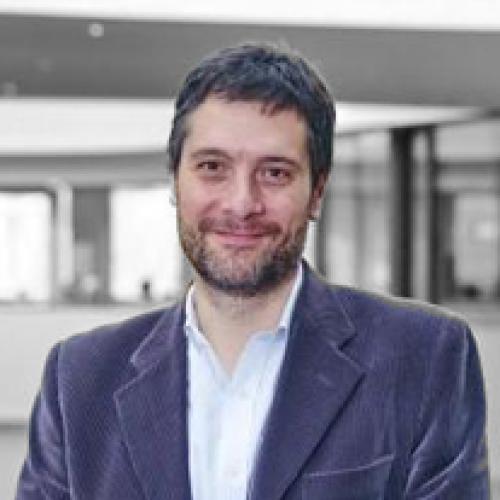
Director, Max Planck Institute for the Structure and Dynamics of Matter
Research Collaborator, IRG 2
After receiving a Laurea degree in Electrical Engineering at the University of Pavia, Italy (1994), Andrea Cavalleri joined Dietrich von der Linde’s group at the University of Essen (Germany), who supervised his PhD research until 1998.
Between 1998 and 2001 he was a Postdoc with K.R. Wilson at UC San Diego. In the extraordinary setting of the Wilson group, Cavalleri and co-workers performed the first measurements of atomic-structural dynamics with femtosecond x-rays, which they generated from Terawatt-laser produced plasmas. These experiments pioneered the field of ultrafast structural science, and lead to the first direct detection of coherent phonons and structural phase transitions in the solid state.
Between 2001 and 2005, he was a member of the scientific staff at the Lawrence Berkeley National Laboratory. At LBNL he became interested in nonlinear THz techniques and applied them to lattice control and to the study of photo-induced phase transitions. He also pursued his interest in ultrafast x-ray science further, developing the first scientific applications of sliced pulses of synchrotron radiation with Bob Schoenlein.
For his work on the photo-induced insulator-metal transitions, Cavalleri was awarded the David Shirley Award for Outstanding Scientific Achievement at LBNL.
In 2004, Cavalleri received the European Young Investigator Award and joined the faculty of the University of Oxford. He was promoted to Professor of Physics in 2006.
As a faculty member at the University of Oxford, Cavalleri continued refining his experiments aimed at the optical control of quantum materials. His work in Oxford culminated with the striking demonstration of light induced superconductivity in the striped cuprates.
In 2008 he moved to Hamburg where he accepted a post as the first director of the Max Planck Research Department for Structural Dynamics, a pilot project that in 2013 lead to the foundation of the Max Planck Institute for the Structure and Dynamics of Matter. He served managing director between 2013 and 2016.
In Hamburg, he has pioneered the field of nonlinear phononics, a new field based on the nonlinear control of crystal lattices. His group has also explored many new research directions, culminated in their demonstration of photo-induced superconductivity in doped fullerites, in the generation of effective magnetic fields in solids through phononics, and the control of the ferroelectric polarisation.
Motivated by the need to measure and understand the dynamics of driven crystal lattices and the dynamics of microscopic order in solids, he has also been a major user of the X-ray Free Electron Lasers.

